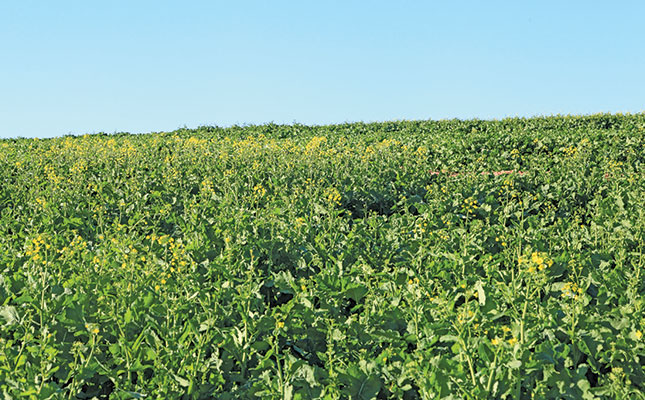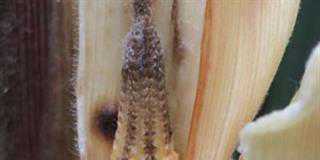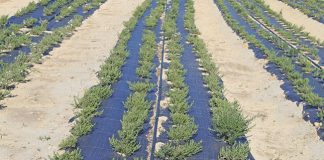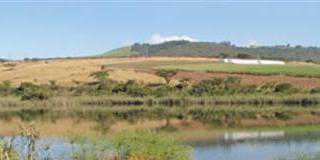
Photo: Glenneis Kriel
In 2018, seven years after joining his father, Bertus, on their family farm, Klipheuwel, near Moorreesburg in the Western Cape, Melt van der Westhuizen won a prize for the highest canola yield in South Africa.
Ironically, Van der Westhuizen did not suspect that the harvest would be one of his best, let alone a record-breaker. Yet he averaged 3,44t/ ha on the 34ha camp entered into the Protein Research Foundation’s annual canola yield competition.
“Our yields had averaged around 2t/ha since we incorporated canola into our wheat rotation system in 2014, but fluctuated greatly from one year to another mainly because of the drought that started in 2015.”
In 2014, Van der Westhuizen harvested a healthy 2,6t/ha, followed by 1,7t/ha during a much drier 2015. Production was up to 2,4t/ha the next year, but fell to just 0,7t/ha in 2017.
“The drought resulted in germination problems across the region. I tried to salvage the situation by planting canola for a second time, but it made no difference, as we were long past the optimal planting window,” he says.
The 2018 harvest did not look to be that promising either, due to wind damage at the end of the season. “I was hoping for an average harvest at best, so was pleasantly surprised when the harvester filled much more quickly than I expected.”
Timing is everything
Van der Westhuizen would have liked to attribute his success to some particular action he took, but says it was predominantly due to factors beyond his control. Moreover, he has been unable to replicate his success, with the 2019 yield being fairly average and the 2020 harvest looking as if it is heading the same way.
“The trick with canola, as with any other crop, is to do the right thing at the right time. I try to plant before the end of April, preferably in moist soil,” he says, adding that if planting has not been done by May, there is little chance of a decent crop.
During the 2018 season, there was sufficient moisture in the soil during planting. But rainfall for the rest of the growing season, which extends from March to October, was below average at 317mm, in comparison with the farm’s long-term annual average of between 350mm and 400mm.
Soil preparation is equally important to planting at the right time, as an environment needs to be established in which plants will thrive.
To identify soil deficiencies and imbalances, Van der Westhuizen arranges for a soil analysis to be done once every three years on every second hectare. A company that has precision equipment is contracted to address imbalances at a variable rate to ensure that each area is treated correctly.
“Our farm is only 303ha in size, of which 285ha are suited to crop production. The size of the farm doesn’t justify the high cost of buying our own precision equipment,” says Van der Westhuizen.
Calcium is added to improve the soil structure. Gypsum, composed of calcium sulphate dihydrate, is the preferred calcium source, as the sulphur helps break down salts in areas where salinity is a problem.
Gypsum is applied before planting the canola, as the crop has a higher sulphur requirement than most others. Wheat and other crops planted after the canola also benefit from this application, according to Van der Westhuizen.
Manure, a rich source of potassium, is also applied before planting. It is sourced from the pigs and cattle on the farm.
“We keep 40 head of cattle, a few sows and 200 ewes to boost cash flow and diversify risk.
The sheep and cattle are fed for most of the winter, but allowed to graze crop stubble and medics during summer,” he says.
Planting
To provide optimal plant density, canola seed is planted at a rate of 3kg/ha. A pre-formulated mixture of nitrogen, phosphates, potassium and essential micro-elements are applied at planting. The quantity of nitrogen is limited in this mixture to prevent seedling damage.
Fertiliser is applied twice more during the season to ensure the plants have access to nutrients when they need it most.
Boron is applied to boost pollination, while a standard programme is used to counter the threat of weeds and insect pests. Chemical products are rotated according to their active ingredients to prevent the development of resistance.
One change that Van der Westhuizen did make in 2018 was to replace Hyola 50, which is a long-season grower, with Diamond, a new, short-season grower. Planting a short-season grower helps lower production and climatic risks by reducing the time to flowering by up to 20 days.
“Where I usually had to wait for Hyola 50 to flower before harvesting, Diamond had me jumping around to get everything done in time for the harvest,” he says.
All the canola produced on Klipheuwel is sold to Southern Oil, an extraction plant and refinery in Swellendam.
With such a small farm, Van der Westhuizen has to plan carefully to make ends meet.
When he joined the farm in 2011, his father, Bertus, was still planting a monoculture of wheat, as did his grandfather. Bertus, nevertheless, started using a gravity feed planter in 2008 in an attempt to ensure less disturbance to the soil.
The family also experimented with medics as a rotational crop with wheat, but today use this rotation only on 30ha.
“Medics can be fed to the livestock, but it’s not lucrative enough to plant over a wide area,” says Van der Westhuizen.
In 2012, they started experimenting with sweet lupines and in 2014 with canola. Today, wheat is rotated with either canola or lupines, depending on market conditions and the condition of the land. This means that either canola or lupines is planted, followed by two years of wheat if no weed or disease problems are experienced on the land.
“I prefer planting canola, as the market for lupines is quite volatile. But canola should be planted on the same land only every third year to prevent a build-up of disease,” he says.
Conservation farming
Van der Westhuizen has switched to conservation farming, which has helped to significantly reduce climatic risk.
“While the drought that started in 2015 had been described as the worst in the region’s history, the droughts during my father’s and grandfather’s time on the farm resulted in significantly lower harvests because they didn’t use conservation farming methods,” he says.
He acknowledges, though, that conservation farming and crop rotation are not enough to guarantee the future sustainability of the farm. For this reason, he has also started experimenting with regenerative farming.
“I planted my first summer crop last season, but it was a complete failure because of the dry conditions. Of the huge diversity of crops in the mixture, only a few came up, but not enough to make a difference to follow-up crops,” he says.
Last season, he began experimenting with a cover crop mixture comprising Japanese radish, rye and saia oats undersown with medics. This will be followed by wheat during the third year. He is also toying with the idea of replacing lupines with a cover crop mixture.
“It’s a long-term project. So far, the experiment looks promising, but it’s too early to tell,” he says.
The medics and alternative crops are not planted with any fertiliser and are expected to improve the soil and availability of nutrients, which in turn will help reduce wheat production costs. The medics and alternative crops have the added benefit of reducing animal feed costs.
Making all these decisions is risky, but Van der Westhuizen is part of a small group of young farmers who are mentored by more experienced farmers.
“I can bounce ideas off people and make better-informed decisions,” he says.
Email Melt van der Westhuizen at [email protected].













